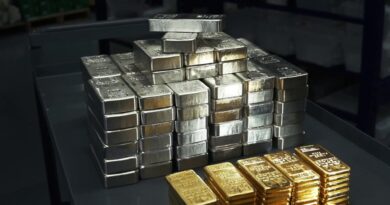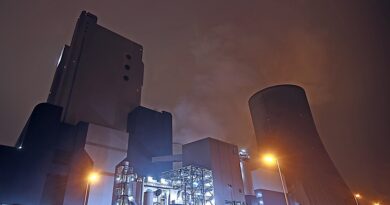Mining and metals: risk from carbon policy
The contest towards net zero is well and truly underway, and miners and metallurgists are under pressure to pick up the pace. To meet the requirements of the Paris Agreement, emissions of seven key greenhouse gases must halve over the next 20 years. Carbon policy is evolving to meet this target – and could significantly impair the valuation of high-emissions assets, says Wood and Mackenzie.
Emissions-related risk is growing
The Paris Agreement lit a relatively long fuse, but pressure is growing on miners to act. For the investment community a decarbonisation pathway is now a prerequisite, with significant appetite for low carbon projects on both the debt and equity sides. This is already lowering the cost of capital for junior miners with low-carbon credentials. At the same time, environmentally-conscious consumers are creating significant demand for green-labelled metals, bringing the potential for higher prices.
Perhaps most importantly, miners are likely to become the target of climate policy, including taxes or cap-and-trade schemes on Scope 1 emissions. To date only 58 of the nearly 200 signatories to the Paris Agreement have actually implemented such measures, and fewer still have policy specifically targeting metals. However, 2021 could prove a pivotal year: with details of the planned EU carbon border tax expected in June a precedent will be set which is likely to be followed by other jurisdictions.
Under the two-degree scenario demanded by the Paris Agreement, we see a carbon price of US$110 a tonne required everywhere by 2030, against our current base cost of US$40 a tonne. This will affect different producers and assets to different degrees.
Our discussion includes:
Solution 1: renewable power
As customers of third-party suppliers, mines are something of a hostage to fortune when it comes to generating electricity from renewables. For example, Vale and Glencore benefit from the availability of hydroelectric power in Brazil, Africa and Canada, but Rio Tinto has to rely on electricity from coal-fired power stations in Mongolia. 100% use of off-grid renewables is currently hampered by a lack of viable storage technology, but over the next decade this could become a real possibility.
In the mining world, copper leads the way when it comes to sourcing renewable power. Contracted capacity includes renewable projects from grid-connected and off-grid solar, wind and hydro plants.
Solution 2: electrification
Electrification is well-established for rail transportation of mining products, but within mines themselves energy density and cost have been issues. Current technology that powers mining fleets through electrical energy includes electric shovel/excavator and the use of trolley assist to help power haul trucks, reducing the use of diesel. And there are moves to install lithium-ion batteries in some mines. There’s also potential for certain applications in sea freight, although range is a major challenge.
Solution 3: biofuel
Diesel consumption for both mining and transport is a big driver of emissions, particularly for iron ore. For BHP and Rio Tinto, for example, this accounts for the majority of their Scope 1 emissions. Biofuel is attractive as an interim solution, although there are questions around the ability of the biofuels industry to meet the potential scale of demand.
Solution 4: green hydrogen
Green hydrogen is only just starting to have an influence on mining. For example, Anglo American plans to trial its first hydrogen fuel cell electric vehicle this year in its platinum operation in South Africa. Given its energy density, green hydrogen has strong potential if cost can follow a similar trajectory to lithium-ion batteries.
Solution 5: methane abatement
For metallurgical coal, emissions are dominated by fugitive methane. While diesel and power consumption are quite consistent across the subsector, the gas content of a given coal seam is highly variable and so is a key determinant of relative overall emissions.
For open cast mines, methane will be released as soon as the seam is uncovered – it’s not feasible to abate fugitive emissions once mining has commenced. Underground, however, pre-and post-drainage of methane for power generation is an option, albeit one which currently generates significant CO2 emissions. In the future, if coupled with carbon capture and storage, it could become a low emissions option, but with high costs
Solution 6: disposals
In some cases, the only real way to eliminate scope 1 and 2 emissions from a portfolio is through divestment. Notably, Rio Tinto has exited all coal, while both Anglo American and BHP are rumoured to be exiting thermal coal within the next few years.
Of course, this last-resort measure is where the objectives of governments and operating companies conflict. Both have the stated objective of reducing emissions. But while companies can relinquish assets, governments cannot. Companies across the energy sector have made the argument that they would be more responsible owners of hydrocarbon assets while they deplete, but in some instances have subsequently sought to divest these assets.
In these cases, short term responsibility to the shareholders own ESG metrics has trumped longer-term environmental responsibility.
Scope 3 emissions
One final element worth noting is that Scope 3 emissions of consumers of mined commodities – such as the steel industry – dwarf Scope 1 and 2 emissions from the miners themselves.
As an example, mining and processing even a high-emission product like iron ore pellets produces 89 kilos per tonne of emissions on average. By comparison, producing a tonne of steel in an integrated steel plant generates emissions of around 1,600 kilograms per tonne. Iron ore producers are well aware that the bulk of emissions associated with their products are in the downstream supply chain and that it’s in their own interest to be part of the solution for the steel industry. For example, BHP recently entered into a partnership with Baowu to look at carbon capture and storage at steel plants.



